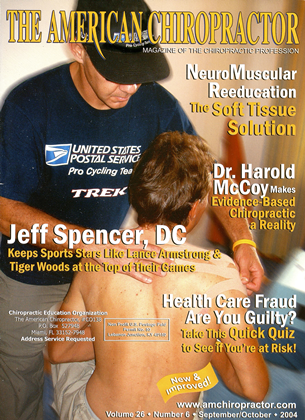A NKLE SPRAINS ARE COMMON INJURIES, BECAUSE THE ANKLE is required to perform complex movements under high ibices during normal walking. This can be particularly important for patients who participate in recreational activities and sports that require running and jumping. Proper evaluation and management in the early stages of an ankle sprain are very important in preventing chronic instabilities. With appropriate care, including orthotic support and exercise, significant improvements in function and stability can be achieved, even in patients with long-standing ankle problems. Acute Care Initial treatment of ankle sprains is the standard "PRICE" formula (Protection, Rest, Ice, Compression, Elevation). Even with severe ankle sprains, using these procedures has been shown to speed recovery and return to sports (see Table 1). With the injured joint protected, patients can be encouraged to continue their activities (rather than using the now-discredited bed rest), with some restrictions. In the case of ankle sprains, this entails the use of a lightweight, but laterally rigid brace, which protects against inversion and ever- sion. If a patient has been placed in a walking cast rather than a mobilizing brace, frequent prolonged stretching of the Achilles tendon must be performed in order to prevent shortening. Conditioning and Exercise During the initial acute stage, exercises for the damaged ankle are not appropriate. However, general full-body conditioning should be continued, using methods that do not place undue stress on the healing ankle (a stationary cycle with pedal straps is rec- ommended1.1 Additionally, vigorous exercise of the opposite ankle's muscles ("cross education" or "crossover") has been shown to provide a healing stimulus and result in more rapid return to activities.2-3 As healing progresses, patients should begin to perform non-resistive active exercises concentrating on mobility of the injured ankle. Once the joint can be passively moved through a normal range, isotonic resistance exercising of the peroneal muscles using elastic tubing should be started.4 Initially, these exercises should be performed from a sitting position, with the heel resting on the floor, to reduce the forces on the ankle joint while still maintaining the functional alignment. As strength builds, the patient should progress to standing during the exercises, in order to re-train the ankle support muscles in a closed-chain position. Further sport-specific exercises should be introduced to ensure that an athlete has all the strength and mobility required to participate in sports. Proprioception One reason some ankle injuries become chronic or recur appears to be the loss of the normal coordination of the muscles about the ankle, rather than simply their strength.5 An easy test is to have the patient stand on each leg, with the eyes open and then closed. Check to see if there is less capability of the injured leg. Practice of the one-legged stance, and use of "wobble" boards may be required to regain normal propriocep-tive coordination. An athlete should be able to demonstrate a "stork stand" for at least one minute on the injured leg before being allowed to return to full competition." Orthotic Support In many patients, custom-made orthotics can also be helpful in preventing future (and often more disabling) damage to the injured ankle. A careful evaluation of the biomechanics of the foot and ankle will find some patients who have underlying anatomical or functional problems. Particularly in the case of athletes, use of stabilizing, custom-made orthotics with good tor-sional rigidity should be considered. Orthotic support and control of inversion/ eversion is necessary and highly recommended whenever there is a deficit in bio-mechanical function.7 Summary Recent studies demonstrate that, even in severe ankle injuries, a well-informed consei-vative and active treatment approach will result in good outcomes. Using active rehabilitation concepts, most doctors of chiropractic can manage acute ankle sprain injuries very well. In many patients, custom-made orthotics will be needed to help prevent future problems and joint degeneration, rrra ► See pg 62 for References Dr. John./. Danchik is the seventh inductee to the American Chiropractic Association Sports Hall of Fame. He is the current chairperson of the United States Olympic Committee's Chiropractic Selection Program. He lectures extensively in the United States and abroad on current trends in sports chiropractic and rehabilitation. Dr. Danchik is an associate editor of the Journal ot the Neuromusculoskdetal System. He has been in private practice in Massachusetts for 2S years. He can be reached by e-mail at liocforjocsdt aol.coiH. Table 1. The "PRICE" Formula Treatment of Acute Injuries Protection of the injured joint (brace or support) Restricted activity (contralateral exercising) Ice (cryotherapy) Compression (elastic) Elevation (above heart level)
 View Full Issue
View Full Issue






